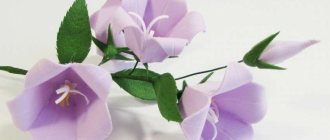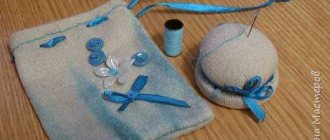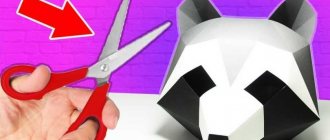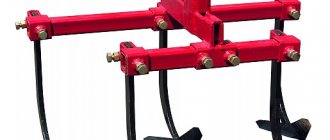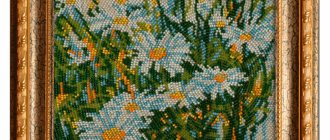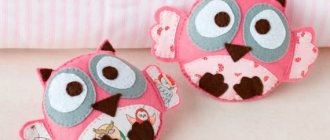Every resident of an apartment building dreams of diversifying their typical home with a standard layout with unusual decor that none of the neighbors will have.
One of these original ideas is voluminous sculptural compositions on the walls, which can be made independently from paper, fabric, putty, plaster and other materials.
Three-dimensional picture
Here are several practical master classes that will allow you to make a three-dimensional painting yourself, adding some zest to the interior.
Paper cutting: technique, master classes
This handicraft comes in several types:
- Outline.
When curled pieces of paper are used to frame a drawing along a previously drawn contour. This technique is sometimes used in conjunction with scrapbooking. - On a plane.
This is a facing technique in which the workpieces are placed next to each other, filling the entire surface with them. - When trimming in layers,
parts are glued into each other. At the same time, the combination of elements of different shades helps create interesting effects. - Volumetric trimming
is most often done on a plasticine base. Twisted parts are attached to the molded blank, which allows you to make complex compositions.
Let's look at a simple example so that you understand how to work in this technique. To make such a violet, take:
- corrugated paper;
- sheet of cardboard;
- a simple pencil;
- scissors;
- a bottle of glue with a spout.
Redraw the presented image onto light cardboard.
From corrugated paper you need to cut squares with a side of 1 cm. To fold the paper elements you need to use a special stick for trimming. If you don’t have one, you can replace it with a pen body sharpened with a pencil.
- Using one of these tools, press a small piece of paper in the center and wrap it around the stick.
- Roll with your fingers without removing from this tool. Lubricate a small area of the contour with glue, place the twisted piece here directly on the stick, and carefully remove this tool.
- Create the second element in the same way, glue it next to the first. Having completed the contours, proceed to filling the inside of the petal.
- When the blanks are glued to all the petals, roll the same elements from squares of yellow corrugated paper. Glue them to the center of the flower.
If you wish, you can draw only the outlines of the plant, then the work will be completed faster. If, on the contrary, you want to prolong the pleasure of creativity, then cut out the same squares from light paper, twist them, fill in the background, or proceed to the next work. See how napkin trimming is done. To make this work, take:
- bright napkins;
- scissors;
- sheet of cardboard;
- gouache;
- trimming stick.
Cut strips 1 cm wide from napkins and chop them into squares with the same side.
Draw the outline of a tree on a white piece of cardboard. Apply glue to a small area so that it does not have time to dry. At this time, take a square from a napkin, screw it onto the tip of a trimming stick, and glue it to the smeared outline. Then glue another one and others. Take napkins of different colors to make the tree bright and cheerful. Fill the entire crown, sketch the trunk with brown gouache. Since you made the foliage of the tree from elements of different colors, make the picture frame from napkins of the same color. Use blue napkins to create a background. Elements for this are also created using the trimming technique. You will get a wonderful picture that will surprise and delight everyone who sees it. Using this technique, children and adults can do many other amazing projects using either flat or contour cutting. For this, corrugated paper in yellow, orange, lilac, green, white and blue was used. First, glue a sheet of blue paper onto white cardboard, then draw the outlines of a fish and algae. After this, roll up blanks for trimming from yellow squares and fill the tail of the fish with them. Make her body from orange and her head from lilac. And white and blue will create the eye of the fish. All that remains is to fill the seaweed with similar elements and admire the wonderful work.
See how you can make interesting crafts using another cutting technique.
Materials and tools
A three-dimensional painting can be made from a variety of materials. Most often, paper is used to create such decorative crafts, but leather, fabric, plasticine and other available materials may also be suitable. In this case, sometimes pre-treatment of materials is required in the form of soaking, dyeing, etc., the choice of which depends on the technique chosen for making the picture and its content.
As for tools, you should definitely have a pencil, scissors, glue (universal), silicone gun, varnish, threads and needles (for fabric options), etc. on hand.
Templates for three-dimensional crafts made from paper and plasticine
Trimming will also help create such flowering cacti. For these crafts take:
- well sharpened pencil;
- plasticine;
- corrugated paper;
- toothpick;
- packing tape or satin tape;
- a pin with a bead;
- colored cardboard.
Let the child make three blanks from plasticine.
The large oval one will turn into a cactus, the small round one will become a flower, and the square one will become a pot for an artificial plant. Cut triangles from green corrugated paper, and from yellow paper - shapes of the same type, but only with an acute angle. You need to cut petals from lilac paper. Insert a toothpick into the cactus and the other end into the pot. Attach the flower base to the cactus. Fill his body with beautiful voluminous blanks. To do this, place a pencil in the center of the paper triangle, wrap it around the rod, and stick it into the plasticine base. Complete the first row, placing the elements close together, then move on to the second and the next.
To get the petal the desired shape, leave its tip free, twist only the part that you will attach to the plasticine.
To decorate a flower, you need to make 1-2 such petals, then fill its middle with triangular blanks made of orange paper. Look how the pot is decorated. It needs to be wrapped in a strip of colored cardboard or wrapping paper and tied with ribbon. A cactus made using corrugated paper cutting has been created. Look at the process of making another work using volumetric techniques. It will help your child develop creative thinking, fine motor skills, and imagination. Children show interest in working with paper, as a result of which such wonderful models appear. Prepare the following:
- corrugated paper;
- scissors;
- album sheet;
- pencil.
Cut paper into small squares.
Place the blanks of each color in separate containers. If the child is not very small, let him draw an apple on half a sheet of album paper. If he cannot do this on his own, adults will help. Coating small areas with glue, let him attach the squares here to make a fabulous rejuvenating apple. You can draw a twig or glue a thin strip of brown paper instead. You can glue one piece of a different color into an already attached one, thereby getting the effect of trimming in layers. The next two works are devoted to this technique.
Painting with paints
The easiest way to create an original painting for your interior with your own hands is to paint it. The subject is limited only by the imagination of the creator. Even if you have no artistic skills, you can create a masterpiece: use abstract techniques, study master classes and photos of finished works.
Oil, watercolor, and acrylic paints will become faithful assistants in creating paintings for the interior. As a base, you can use either professional canvas or regular thick paper or a primed board.
Advice! You can draw inspiration from nature if there are picturesque places near your home. If you are unlucky with either the location or the weather, feel free to draw your household, pets, fruit compositions - whatever. The accuracy of the reproduction of reality does not play any role, the main thing is to approach the process with soul.
Modular paintings are suitable for almost any room: from the kitchen to the living room, but it is important to select the appropriate images. If you don’t have the time to create a masterpiece with your own hands, then we have good news for you - today you can buy them in any specialized store!
Schemes for cutting corrugated paper in layers
New Year is just around the corner. Children and their parents will certainly prepare for this holiday. They will be able to make a postcard by placing a Christmas tree on its front side.
Prepare with your children:
- corrugated paper;
- Christmas tree drawing;
- glue and a brush for it;
- pencil;
- thick sheet of paper.
The work begins with drawing a Christmas tree on a sheet of paper.
You can use a template for this. Cut squares from green paper, as well as from sheets of other colors. First, the child will fill in the contours of the Christmas tree with green squares wrapped around a pencil. Then, in some places you need to glue blanks of other colors on top of them. They will become a decoration for the Christmas tree.
But you can do not trim in layers, but along a plane. Then you will need to first glue colored squares, which will become toys, and then fill the surface with green ones.
You can give your mother or grandmother a souvenir scarf. They will certainly be happy, especially since their beloved child did such a job. To make a scarf, you need to take:
- a sheet of red cardboard;
- corrugated paper of different colors or napkins;
- glue together with a brush;
- scissors;
- pencil;
- drawing template.
If the gift is made by March 8, then have dad or grandpa transfer the pattern template onto cardboard.
You will need a triangular part of the base. To do this, draw a square on cardboard, then cut it diagonally. Starting with small areas, have your child fill in the design with squares of different colors. You will need a lot of them. If your child doesn't have the patience to turn the crosscuts, help him with this so as not to reduce his interest in the work. The result is such a wonderful scarf. The next work was done by his mother and the child. A great example to follow. The result will be mushrooms and autumn leaves, made using trimming layers.
To create an autumn forest, take corrugated paper in red, orange, yellow. You can also make inclusions using brown and green.
For the craft, take:
- colored paper, cut into squares with a side of 2 cm;
- templates for application;
- trimming stick or pencil;
- glue;
- scissors.
It is convenient for children to glue using a brush or taking a glue stick.
Provide them with these materials and help them cut paper into squares. You can take your favorite mushroom and leaf templates from the Internet or use the ones presented. You can draw them yourself on thick cardboard and cut them out. The most painstaking work is cutting out squares and forming twisted blanks. To create the desired shape, place a square of paper on your left index finger. Hold it with your thumb. Place a pencil in the center of the workpiece and twist it. As you can see, this is another option for forming parts. We will also glue it in another way so that you can choose the one that is most suitable for you.
Pour glue into a bowl. Dipping the trim piece here, attach it to the leaf template. Having glued the red one, attach the yellow one directly onto it using PVA. The result will be an interesting effect. The yellow one is also glued to the orange blank; use green and brown squares as a base.
To make mushrooms, line the stem with white ends and the cap with brown, yellow or red.
Panels made of bulk materials
You can also make voluminous paintings from cereals with your own hands. For example, for such a panel, which is presented below, all the bulk materials that are at hand will be useful.
First, the contours of the future painting are marked on thick cardboard and a specific area is coated with glue. Then fill it with the desired type of cereal, for example, buckwheat, and press lightly. Add the grains so that they tightly fill the surface of the picture. Do the same with other parts.
Having filled the entire surface of the canvas, cover the product with varnish and insert it into a suitable frame.
Children's paintings made of corrugated paper
The trimming technique will also help you make them.
Such children's paintings turn out to be very cute and touching; they will remain for a long time and will decorate any corner of the house. If the child can, let him draw a round lake, reeds along its shores, and ducklings swimming. He will depict where the birch tree will be, a rainbow, and draw a horizon line. If this is difficult for a child, then adults will help.
For this work you will need squares of corrugated paper with a side of 1.5 cm.
The larger the size of the paper blanks for trimming, the higher the pile of the finished work.
Having cut them, you need to start gluing. In this case, it is most advisable to fill the space on the left side. First, cover the rainbow with multi-colored stripes, then make grass around it, and glue green trims. Also decorate the sky on this side, filling it with twisted blue squares. Leave some space for the clouds; glue the white blanks here. Also on the left side, start gluing brown parts in the form of reeds, make the chickens yellow, and lay out the lake blue.
Gradually moving to the right, decorate the white birch trunk with black splashes, rolled from paper of this color. Fill the entire space with voluminous blanks, after which you can enjoy the view of the colorful painting. This craft would be ideal for a kindergarten. Having brought it there, the child will certainly take first place in the competition.
But there are also more complex works that schoolchildren can do.
These violas were created by students in grades 1–8. This kind of joint work brings the guys together.
On a sheet of whatman paper you need to draw a viola with a pencil or transfer another image here. Then each of the guys will fill the flower with twisted trims of a certain color.
You can make winter paintings for the New Year.
If you draw well, draw the future art on cardboard with a pencil; if not, then just redraw it. A good template is embroidery patterns. They are transferred to a sheet and decorated with rolled paper pieces of a certain color.
Please note that the outlines of the Christmas trees are made of blue elements. This technique allows them to keep their shape and look fluffy and snowy.
Finally, look at how to make a New Year's garland, which can also be created using the trimming technique. For it, on whatman paper or white cardboard, draw the letters of the future inscription and cut them out. Now each one needs to be framed first with white trim, and red ones glued inside.
For the base, take a satin ribbon. Using a glue gun, letters are attached to it to create an inscription. Remember to maintain space between individual words.
That's how many interesting and necessary things trimming can help you do. But this is not all that can be made using this technique. If you want to create a three-dimensional snowflake, watch this visual master class.
Another will teach you how to make a heart-shaped topiary using the same technique. This is what you would give to your loved one for his birthday or Valentine's Day.
And today we will talk about how to make a paper painting with your own hands. Such a picture can look not only like an appliqué, but also like a three-dimensional sculpture.
To make a three-dimensional picture from paper you will need the following materials:
- colored paper
- scissors
- Napkins
- Double-sided tape or stapler
- Basis for the painting
- small carnations about three centimeters long
- hammer
How to make a 3D painting with your own hands. Technology. Ready-made 3D paintings
Content
What are 3D paintings?
Greetings, dear, in touch. And in this article I want to tell you about how to make a 3D painting with your own hands. At first glance it may seem very difficult. But I assure you, if you know what needs to be done and how, then you will not have any difficulties. Believe me, I have already drawn about 1000 3D paintings of varying complexity and purpose, so I have something to surprise you with. You will also learn what to make such pictures from and how to install them. So the article promises to be extremely useful and informative, so read it to the end and very carefully.
3D paintings are a special three-dimensional image that takes on the correct three-dimensional appearance when viewed from a certain point.
Such paintings look as voluminous as possible in photographs, precisely for this reason, they have found their maximum distribution precisely where there is photo or video shooting ( 3D exhibitions , holiday decorations, 3D advertising, TV advertising, etc.).
As I said, the basis of such paintings is precisely a special image. That is, it’s all about the three-dimensional image, and not about the special material, as many people mistakenly believe.
If you have a three-dimensional image, you can print it on anything (banner, film, paper, fabric, plastic, etc.). If we take 3D paintings for an exhibition , then such paintings are printed on a regular banner. This is the optimal price-quality ratio.
The banner is quite durable, wear-resistant, the images are bright and saturated, and is inexpensive. So, where can you get a special three-dimensional image? There are two options here, let's start with the first - how to make a 3D painting with your own hands.
How to make a 3D painting with your own hands.
First, let's define the types of 3D paintings. There are two types of three-dimensional paintings. These are vertical ones, those that are mounted on the wall. And horizontal ones are those that are attached to the floor. Now let's move on to the question of how to make a 3D painting with your own hands. It’s very simple, I have two specialized courses on this topic.
The first is a mini-course called “3D drawings for the lazy or how to draw 50 3D drawings in 2 hours . In general, everything in this course is simple, here we do not delve into any technical details, but I simply provide you with a special universal form for converting to 3D and show you how to work with it. The duration of the course is only 60 minutes.
As a result, the entire process of creating a full-fledged floor 3D painting (or rather a three-dimensional image for it) comes down to just 3 stages. At the first stage, we select and decide on the image that we want to convert into 3D format.
At the second stage, we insert this image into a special universal form for translation into 3D .
At the third stage, using this form, literally in 1-2 minutes we convert the picture into 3D format and get a three-dimensional image.
Everything is so simple that using this form you can produce three-dimensional images for floor 3D paintings simply on an industrial scale.
And then these paintings can be used for various purposes, be it 3D exhibitions, 3D advertising or 3D paintings for holiday decoration
.
Professional course on 3D exhibitions and 3D paintings for them.
I also have a professional course on 3D exhibitions and paintings for them. The duration of the course is about 6-7 hours. In this course, I dedicate you to all the subtleties and nuances of creating both horizontal and vertical 3D paintings for exhibitions. There are also many useful points on the proper organization and operation of the exhibition itself. In a word, an indispensable course for those who want to open their own exhibition. Everyone who purchased this course was satisfied. Here are reviews about this course.
A set of ready-made 3D paintings.
Another simple option for making a 3D painting with your own hands is to take ready-made three-dimensional images and print them on a banner. I have a whole set of floor 3D paintings of different sizes and themes, completely ready for printing (about 50 pieces in total).
How to make a 3D painting with your own hands. Education. Ready-made 3D paintings
You can view all 3D paintings of the kit by clicking on the link below.
DOWNLOAD A SET OF READY 3D PICTURES.
And this is where my article comes to an end. I hope it was useful to you, and now you know how to make a 3D painting with your own hands. For any questions regarding purchasing a kit or training courses, please contact us by email, or leave your questions in the comments. And good luck to you all in your endeavors, bye.
If you liked the article, please do the following:
- Leave a comment. Just write whether you liked the article or not. Write what topic you would like to discuss in the following articles.
- Share this article with your friends.
- Subscribe to blog updates and my YouTube channel.
Best regards, Rustam Zakirov.
rz3d.ru
Master class video:
3. Cutting out thin parts.
Cutting grass, feathers, hairs or fur is not difficult, try to cut in the direction of hair growth, otherwise it will “puff up”. Paint over the white edges with a pencil of a lighter shade than the drawing itself.
And when cutting out the stems, you don’t have to paint over the white edges so as not to add unnecessary thickness.
4.
Shaping.
Imagine what the object you want to depict looks like in real life, look at it layer by layer. This will help to correctly recreate the volume from paper.
As a backing, use an eraser, sponge or rubber mat (a computer mouse pad will do).
5.
Installation and gluing.
6.
Background.
The choice of background is very important. The appearance of the finished work largely depends on the color and texture of the material. If the painting is light, then a dark background will create the impression of depth and emphasize the image.
Choose a background that complements the image, rather than being an independent part of the picture.
If you are going to frame a picture, don't add decorations.
But in a postcard, correctly selected decor will only add charm. Step-by-step instructions:
1. Select a pattern for the entire composition and for the base layer. 2. Thin paper for the base layer must be compacted. 3. Cut out individual elements of the design for the second layer. The elements are cut out completely, repeating the pattern of the base layer. 4. Glue the elements of the second layer to the base using double-sided tape. The tape can be used in 1-2 folds (at this stage you can make your own changes to the drawing). 5. Cut out individual elements and form subsequent layers of the design. Before finally gluing the part, make sure it is in the correct position. 6. Finalize the work into a frame. When making cards, you can additionally decorate them with ribbons, sparkles, beads, etc.
Incredible and fantastic paintings from pieces of paper by an amazing non-professional French artist, sculptor and photographer Nathalie Boutté inspired me. I wanted to tell you how to make such a picture out of paper. The enormous possibilities of this ordinary and at the same time unique material are revealed in her wonderful colors in multi-layered paintings.
Nathalie began creative searches and experiments with various types and textures by studying the various properties and well-known techniques for working with paper. Her experiments with origami and work with three-dimensional compositions led her to the creation of an interesting technique of three-dimensional applique from strips and pieces of paper.
The possibilities of the material and this technique allow you to create very original works. Portraits made from many layers of paper turn out surprisingly alive and spiritual.
DIY 3D painting. Papertol or 3D decoupage – Fair of Masters
Do you want to feel like a little wizard? Then this is the place for you! Now I’ll tell you how to do this.
It all started with a gift brought from Europe by my friends. They know how to surprise and delight! When I opened the package, I was speechless for a moment. I have definitely never seen such mysterious beauty before! There was a microcosm in an unusual frame. It was a landscape with a perspective leading into beautiful distances. The alley and openwork trees were so realistic that it seemed that a gnome or an elf was about to peek out from behind the tree trunk. Looking at the picture, your fantasy plays out, and you can contemplate for a long time, being in this small world, forgetting about business and worries. Curiosity haunted me, how does it all work? The illusion of objects hovering in the air is created. After much thought, I had to dismantle all this beauty... The terrible secret was solved. Everything ingenious is simple! Now I devote all my free time to creating such three-dimensional paintings. I recommend you try it too. The result is striking in its liveliness and novelty of impressions. The picture seems to come to life before your eyes!
So, let's begin. We choose any picture or picture we like (to begin with, it’s not difficult to cut out) taking into account perspective and versatility. This is a very important aspect of the matter. Let's roughly estimate how many layers we need depending on the plan: 1st, 2nd, 3rd, etc. There can be 5, 6 or more if necessary. We print identical pictures based on the number of layers. In this case we have 6 of them.
To get started you will only need a few simple tools:
- Paper scissors.
- Nail scissors.
- Dummy knife.
- Double-sided tape (white or black)
- Corrugated cardboard (for interlayer between adhesive tape).
- Thick cardboard for the base of the picture.
We begin to cut out the first picture along the contour, only the sky. The second picture is cut along the outline of the house, etc. Each picture is a layer of the picture. The closer the layer is to us, the finer the details become, and on the topmost layer only the smallest details that are closest can be cut out. For example, a step or pots of flowers on the window.
It is advisable to tint the ends of all parts with a dark felt-tip pen, because... the white edges don't look neat.
We glue strips of tape on both sides of the corrugated cardboard (you can also use foam) to create more height between the layers. We cut the tape into squares and stick them on the back of each part.
All that remains is to glue the layers together. We glue the first whole picture onto cardboard, and mount all the other layers on it.
This is how the multi-layer “pie” turned out.
Now we insert it into a wooden box (I think we can’t do this without male help).
And we glue this entire structure to the frame with glass.
Your masterpiece is ready!
I am sure that you will look at your creation from different angles for a long time and watch with a smile as your friends try to look inside the picture and understand how it was made! But every master has his own secrets...
www.livemaster.ru
Herringbone
A beautiful Christmas tree can be created from cardboard and corrugated paper using the trimming technique.
To create a craft with your own hands you will need:
- A roll of green crepe paper;
- Scissors;
- Glue;
- Beads for decoration;
- Cardboard star (or toy).
How to make a craft:
- Make a cone out of green cardboard.
- Cut many squares of different sizes: 1/1, 1.5/1.5, 2/2, 3/3, 4/4, 5/5.
- Using a rod (or a brush handle), form “twists” and immediately glue one at a time onto the Christmas tree, starting from the top. Fill four rows with 1/1 cm tubes.
- Then move alternately 1-2 rows to larger “turns” and finish trimming with tubes measuring 6/6 cm.
When the Christmas tree is dry, decorate it with beads and place a red star on the top of the head.
From buttons
With their help, you can create original things by sewing or appliqué. Often this type of fittings is used to depict leaves on trees. Buttons can be glued in an original way inside any outline, for example, the silhouette of a butterfly or cat. In sewing stores you can select parts of various shapes, colors and materials and lay them out, like a mosaic, according to a pre-prepared pattern. Such button creations will fit perfectly into the kitchen, however, they can also be used for the living room and bedroom.
Advice!
Buttons can be glued around the perimeter of the picture frame, giving it individuality.
